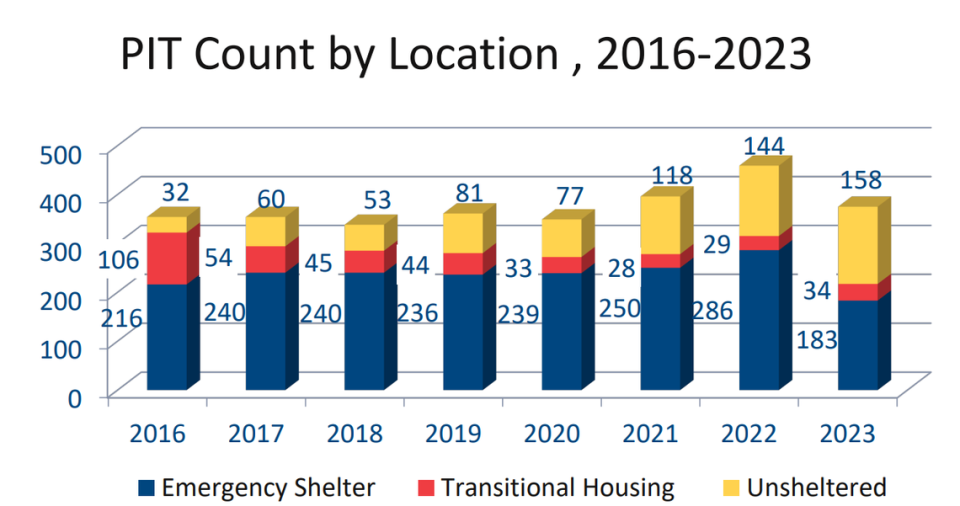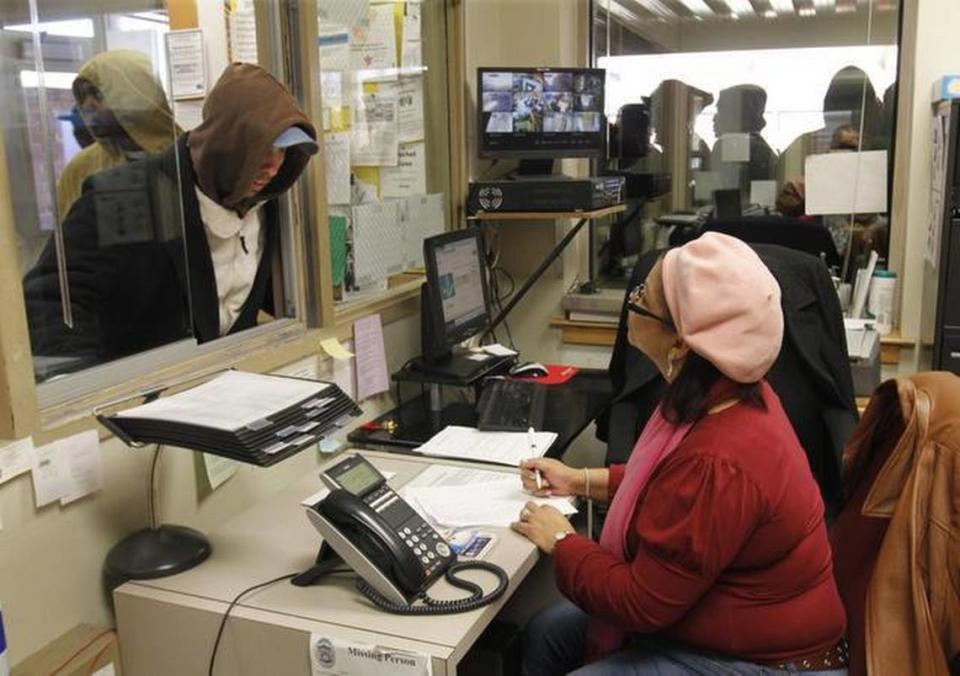The results of Durham’s homeless count are in. Here’s what the numbers reveal.
The results of Durham’s 2023 count of the homeless population are in, and there’s one number in particular that stands out: 10.
“In our 2023 Point-in-Time Count, 10 households with children were experiencing unsheltered homelessness,” homeless systems manager Colin Davis said. “No shelter beds, no affordable housing for them.”
In 2020, zero families with children were out on the streets during the annual count.
“Three, four years ago, we were not seeing families out in unsheltered situations except for a very short period of time. Now we are seeing that on a very, very, very consistent basis,” said Russell Pierce, executive director of the nonprofit Housing for New Hope.
And it’s not just families. The total number of unsheltered people — those sleeping in cars, on the street, or in the woods — has more than doubled since 2020.
Housing for New Hope conducts the PIT count each year during the last week of January. The idea is that on such a (typically) cold night, those still outside or in shelters have exhausted all their other options.
How many people are homeless in Durham?
The numbers are up since before the coronavirus pandemic, and mixed since last year, according to the nonprofit agency:
375 people are experiencing homelessness, down from 459 last year
158 are unsheltered, up from 144 last year
Most of Durham’s homeless, 68%, are African American
There’s no one reason why a person becomes homeless, but Pierce said the affordable housing crisis is central to the rise in Durham since 2020.

The numbers do not paint the whole picture, but they offer a snapshot of which federal agencies base funding. In truth, only a fraction of Durham’s homeless gets counted each year.
“The easiest way to look at the Point-in-Time count is: Imagine you look in your bank account today. And you have X number of dollars today. That’s our Point-in-Time Count,” Davis explained.
Urban Ministries of Durham is one of the agencies that provides overnight shelter. Executive Director Sheldon Mitchell said, like most temporary shelters in the area, their beds stay filled.
“Pre-pandemic, 150 would have been our capacity. Currently, we’re at about 66,” Mitchell said. “And we’re typically always full.”
Is permanent supportive housing the way forward?
During the PIT count, County Commissioner Wendy Jacobs met Jerry, a 63-year-old man living in the woods near Interstate 85.
“He told us that he suffers from schizophrenia and bipolar disorder, that he struggles with using alcohol,” Jacobs recounted. “There is absolutely no reason that somebody like Jerry should be living unhoused in the woods and not be able to get help.”
The city of Durham started the HEART program, which sends unarmed specialists instead of police to some 911 calls, nearly a year ago.
“They identified seven people who already they’ve responded to 20 times,” Jacobs said.

She said the answer lies in permanent supportive housing, which offers residents wrap-around services like job training, benefits counselors, and mental and physical health care.
Housing for New Hope is hoping to fill more of that need by buying Carver Creek Apartments, a $6 million senior housing community for sale. They’ve asked the city and county to partner in buying the property and hope to transform it into a permanent supportive housing campus one day.
“This is the way that we’re going to help our most vulnerable residents who we see on the streets in downtown Durham, on Ninth Street, living in the woods, who have severe mental illness and substance use,” Jacobs said.
The City Council and Board of County Commissioners will both consider the matter this month.
City Council member Leonardo Williams challenged business and faith leaders to do more.
“This is America. This is a problem that shouldn’t be,” Williams said. “We have more than enough churches. We have more than enough resources in the private sector. We should really look at expanding this public-private partnership to address homelessness.”
Are you concerned about someone living unsheltered? Contact (984) 358-1196 or email streetoutreach@housingfornewhope.org.

